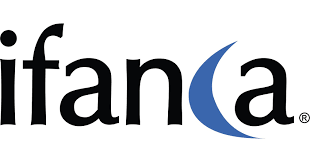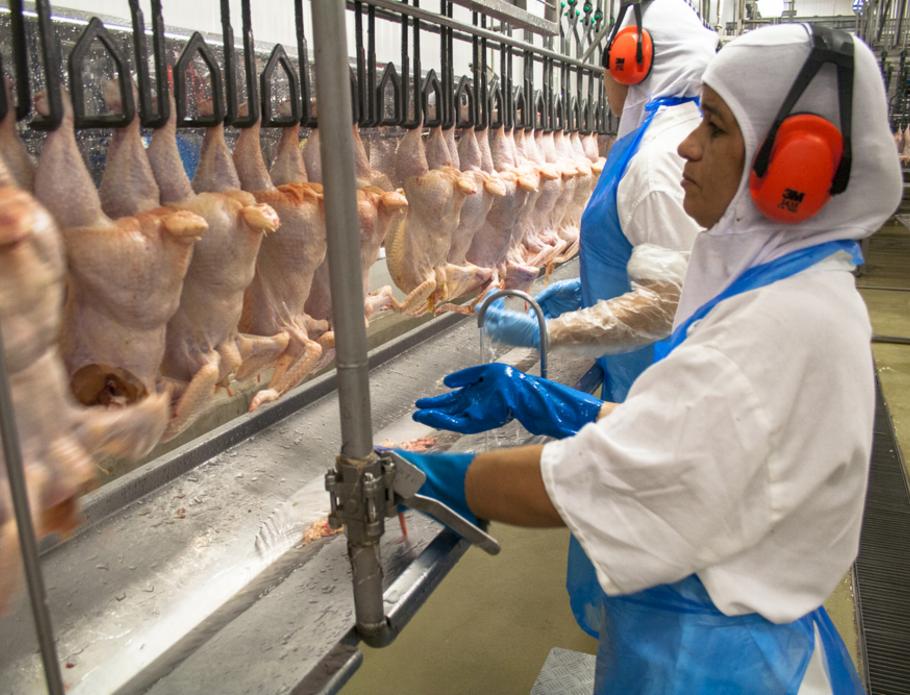
How robust is Brazil’s $2 bln halal poultry industry?
Photo: SAO JOSE, SANTA CATARINA, BRAZIL, September 16, 2009 at a factory processing chicken / Alf Ribeiro / Shutterstock.com
Brazil’s first ever chicken to be shipped abroad in the mid-1970s was halal. Today, every year over 1.5 million tons of more than 4 million tons of exported Brazilian poultry are halal. How robust is Brazil’s halal poultry industry?
| YOUR PAIN POINTS ADDRESSED | ASK YOURSELF | |
| Scenario: You are a meat supplier in Brazil looking to expand into OIC markets |
How robust is Brazil's halal poultry industry? |
How substantial is Brazil's poultry industry? |
| What is Brazil's role in the global halal poultry industry? | ||
| What are the major challenges and growth opportunities for poultry exporters in Brazil? | ||
The Brazilian poultry industry is enormous. It employs no less than 3.7 million people across the value chain, around 700,000 of whom work in processing facilities.
While the country as a whole has suffered from a severe economic crisis for several years, the country’s poultry sector has grown from strength to strength, producing a record 13.1 million tons of chicken meat in 2015, equivalent to a 3.6 percent increase on 2014.
Around 70 percent of Brazil’s chicken production in 2015 was consumed domestically, while the remaining 30 percent, or 4.3 million tons, were exported to 160 countries, a 5 percent increase in sales compared to 2014. Growth is driven by rising global demand for poultry and the depreciation of the Brazilian Real since 2012, which has made exports cheaper.

Map of South America
“In 2015 we entered some new markets such as Mexico, Pakistan and Myanmar,” said Ricardo Santin, Vice-President of the Brazilian Association of Animal Protein (ABPA), to Salaam Gateway. “And we took over some of the United States’ exports, as they suffered from an outbreak of bird flu.”
The outbreak of bird flu in the state of Iowa shows just how devastating the disease can be: an estimated 50 million chickens had to be killed, resulting in a financial loss of nearly $1 billion.
“Brazil is the only country in the world that never had a case of avian influenza or bird flu,” said Santin. “This year alone we took 70,000 samples and not a single case was detected.”
Most recent data indicate that Brazil’s poultry exports from January to November increased 3 percent to reach 4.022 million tons, up from 3.9 million tons in the same period last year. However, revenues were down 4.4 percent to $6.27 billion, according to ABPA.
HALAL EXPORTS
“The first ever Brazilian chicken to be shipped abroad in the mid-1970s was halal,” said Santin. “One could say that halal put Brazilian chicken on the map.”
Export of halal chicken increased from 1.54 million tons in the first nine months of 2015 to 1.57 million tons in the same period in 2016. Due to the weaker Brazilian Real, total revenue over the same period dipped from $2.4 billion to $2.2 billion.
In 2015, 48.35 percent of chicken exports were halal, which makes Brazil the world’s leading exporter of halal chicken. The main importing countries are the Gulf states Saudi Arabia, the United Arab Emirates and Kuwait.
Discussing halal certification, Santin said, “We do not judge. Just give us your technical or religious requirements, and we deliver. Of course, proper halal certification process is key.”
According to the Brazilian Poultry Association (UBABEF), which represents 92 percent of all chicken exporting companies, all of its associated companies are equipped and trained to carry out halal slaughter.
In the biggest plants, Brazil’s main certifiers, such as the Federation of Muslim Associations Brazil (Fambras) and its sister organization Cibal Halal, have their own training areas.
“All chicken is killed by hand by Muslims,” Nizar Ghandour, Fambras’ International Relations Manager, told SalaamGateway. “There are even three Brazilian companies that offer chicken that was not stunned before slaughter.”
Most chicken around the world is stunned by an electrical water bath before being killed. Most Islamic authorities consider the practice halal. Some, however, follow a stricter interpretation and only accept un-stunned slaughter.
CHALLENGES
However, Belgian consultant Frans Fransen of IFT Poultry has warned that not all halal in Brazil is as halal as it should be. “I traveled throughout the country about five years ago,” he told SalaamGateway. “It was clear to me that at times you just pay $20 and you get your halal stamp. Really, there should be more government control.”
According to Fransen the reason why Brazil is the world’s leading exporter is because it is the cheapest producer. “It has cheap resources, low wages and, most importantly, the Real has been in sharp decline,” he said. “If it were not for the Real, Brazil wouldn’t be where it is today.”
The World Bank estimates that it takes 1.7 kilo of feed, 3,000 liters of water and 42 days to produce 1 kilo of chicken meat. As the fifth largest country in terms of size, Brazil offers plenty of land and water resources.
Most of the country’s 180,000 poultry farms are found in the south and middle of the country, which offers a more or less stable climate year round, as well as plenty of chicken feed such as corn and soya.
The industry is vulnerable to price fluctuations. In 2015 and early 2016, Brazil was hit by droughts which badly affected the country’s corn crops. The shortage was worsened by wholesalers who, with an eye on the weak Real, preferred selling abroad.
The Brazilian government took swift measures. It abolished the 8 percent tax on corn imports from outside the South American trade bloc Mercosur for six months and auctioned 500,000 tons of government-owned stocks at reduced prices.
The ABPA expects corn imports, mainly from Argentina and Paraguay, and to a lesser extent the U.S., to amount to five times higher than last year.
OPPORTUNITIES
Brazil is likely to remain one of the world’s top producers and exporters of halal chicken. The United States Department of Agriculture (USDA) foresees a 3 percent increase in total production in 2016.
Despite the recent price hike in chicken feed, and as long as the Real stays low, Brazil remains highly competitive. It furthermore enjoys an advantage of scale.
Following a string of mergers and takeovers, agri-business giants BRF and JBS control nearly 50 percent of Brazil’s chicken production and 70 percent of export.
Arguably, the biggest growth potential for Brazilian chicken lies in the Far East. Following an outbreak of Food and Mouth Disease in Brazil, Indonesia not only banned the import of Brazilian beef, but chicken as well.
“There are no religious, scientific or health-related reasons to ban Brazilian chicken from the Indonesian market,” said Santin.
Brazil brought the case before the World Trade Organization, which is expected to issue a final decision in the first half of 2017.
According to Santin, the trade ban is only a means to protect Indonesian poultry farmers, which in 2015 produced some 1.6 billion tons of chicken.
“But we are not a direct competitor to local producers, as we deliver frozen, not fresh chicken,” said Santin. “Perhaps we will not even export to Indonesia. Three years ago, India opened its market for Brazilian chicken, but so far we have not exported. The main reason we want the ban lifted is because it gives Brazilian chicken a bad reputation.”
| RECOMMENDED ROADMAP |
| Obtain certification: Getting halal-certified in Brazil is a stamp of assurance that is recognized worldwide |
| Map the export opportunity: Determine the major export markets, as well as up-and-coming markets to target |
© SalaamGateway.com 2016 All rights reserved

Peter Speetjens, DinarStandard